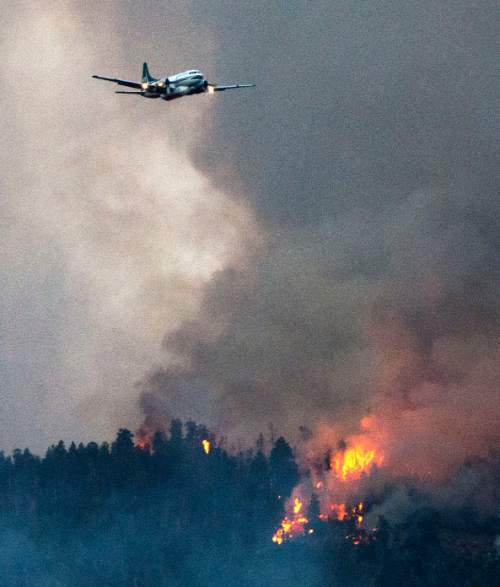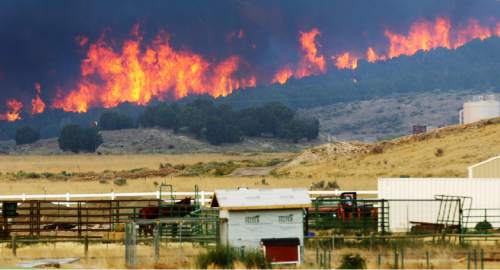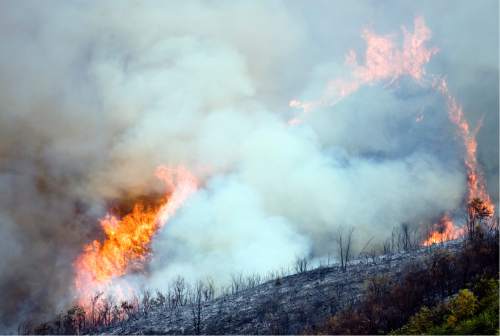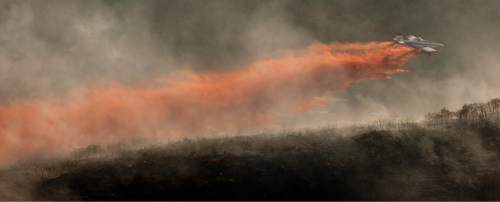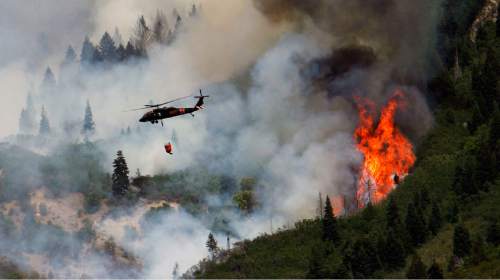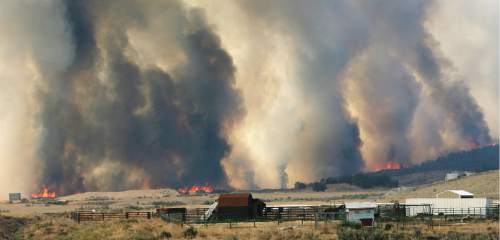This is an archived article that was published on sltrib.com in 2015, and information in the article may be outdated. It is provided only for personal research purposes and may not be reprinted.
After a warm, dry winter and a mostly mild spring thus far, an active summer for Utah firefighters seems hard to avoid at this point.
"There aren't a lot of weather scenarios that can protect us from a busy fire season this year," warned Shelby Law, a meteorologist with the Utah Bureau of Land Management.
June, the first month of the official wildfire season, currently looks as if it will get off to an average start. But Law doesn't expect a strong monsoon season, which means July and August could be busier, compared to the past few years.
Even last week's big snowstorm, which dumped several inches in Utah's valleys, and at least two feet in the mountains, won't make a dent.
"It's not going to make any kind of difference, especially in the higher elevations. They're just too far behind to recuperate," she said.
"We're expecting a bad fire season, and we don't expect the drought will be rectified anytime soon," echoed Joe Dougherty, spokesman for the Utah Division of Emergency Management.
Northern and central Utah's higher, forested elevations especially are at risk due to the worsening drought. Water officials are comparing the upcoming summer with other dreadful drought years, including 1934, 1977 and 2002.
Meanwhile, the unofficial fire season seems to have already arrived: A wildfire in Sevier County on Tuesday destroyed two cabins and other outbuildings; and another two started the same day in Wasatch County, with one of them growing to more than 400 acres.
Some preseason flare-ups are normal, but the dry winter means small fires are more likely to turn into bigger blazes, said forestry division spokesman Jason Curry.
In anticipation, the BLM — which mostly covers the state's lower elevation terrains — is hiring about 10 percent to 15 percent more seasonal firefighters this year, said spokeswoman Heather O'Hanlon.
The Utah Division of Forestry, Fire and State Lands and the U.S. Forest Service, though, are maintaining their normal staffing levels.
Utah has done more mitigation projects across the state in recent weeks than it normally does, Curry said, thanks to $1.5 million in funding from lawmakers this past legislative session.
The Forest Service plans to do the same amount of mitigation, and the low snowpack has allowed them to start about a month earlier, said Forest Service spokeswoman Loyal Clark. The Forest Service recently completed a 100-acre prescribed fire near Mirror Lake, which normally would have been inaccessible to them this early because of several feet of snow, Clark said.
Firefighter training and briefings have started earlier, too. The North Summit Fire District began training in February, and the Forest Service — which would normally hold its briefings in April and May — began holding them in March.
Law said it might be tempting to compare the upcoming season with 2012, when about 400,000 acres burned across the state. But that year saw a particularly dry spring and early summer, she added, saying it is hard to say at this point whether 2015 will be that bad.


